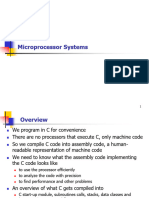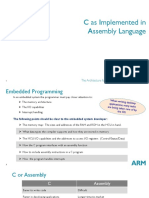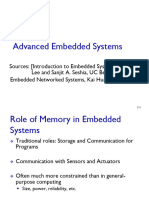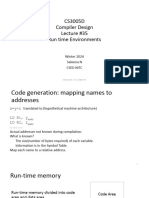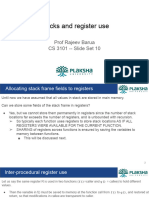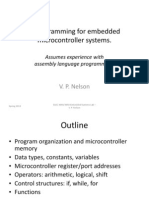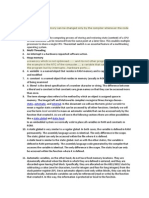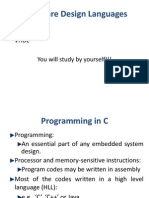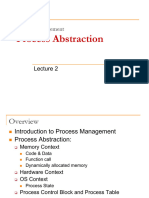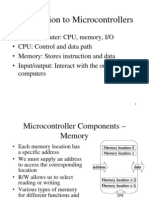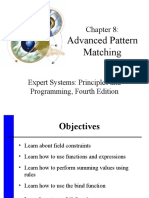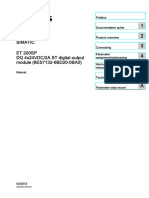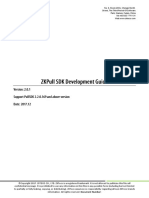0% found this document useful (0 votes)
72 views46 pagesProc Emb Ch4
This document discusses how C code is compiled to assembly language. It explains that C code is compiled in multiple stages, including parsing, optimization, code generation, and assembly. The generated assembly code provides a human-readable representation of the machine code that microcontrollers actually execute. Understanding the generated assembly code allows for more efficient use of the processor and precise analysis of performance and other issues. It also covers key concepts like register use, memory requirements, and the compiler's runtime start-up module.
Uploaded by
Jihene ZgolliCopyright
© © All Rights Reserved
We take content rights seriously. If you suspect this is your content, claim it here.
Available Formats
Download as PDF, TXT or read online on Scribd
0% found this document useful (0 votes)
72 views46 pagesProc Emb Ch4
This document discusses how C code is compiled to assembly language. It explains that C code is compiled in multiple stages, including parsing, optimization, code generation, and assembly. The generated assembly code provides a human-readable representation of the machine code that microcontrollers actually execute. Understanding the generated assembly code allows for more efficient use of the processor and precise analysis of performance and other issues. It also covers key concepts like register use, memory requirements, and the compiler's runtime start-up module.
Uploaded by
Jihene ZgolliCopyright
© © All Rights Reserved
We take content rights seriously. If you suspect this is your content, claim it here.
Available Formats
Download as PDF, TXT or read online on Scribd
/ 46

